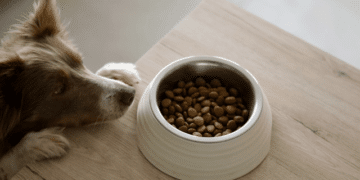Bringing a pet into your home is one of life’s greatest joys. They provide love, companionship, and endless entertainment. But sometimes, along with all the cuddles and tail wags, comes a frustrating challenge destructive pet behavior. Whether it’s a dog chewing furniture, a cat scratching up the couch, or a puppy tearing through shoes, these behaviors can leave pet owners feeling overwhelmed.
The good news is that destructive behavior is not about spite or malice. In most cases, it’s a pet’s way of communicating unmet needs, anxiety, or simple curiosity. With patience, the right strategies, and a little understanding, you can address these issues and create a peaceful home.
Why Pets Become Destructive
Before fixing the problem, it’s important to know why it happens. Pets often act out for reasons that are perfectly natural to them, even if they’re stressful for us. Common causes include:
-
Boredom or lack of stimulation: Pets with too much energy and nothing to do often turn to chewing, scratching, or digging.
-
Separation anxiety: Dogs left alone for long periods may panic, leading to torn pillows or scratched doors.
-
Teething: Puppies and kittens chew to soothe sore gums.
-
Stress or changes at home: A new baby, a move, or even a change in routine can make pets act out.
-
Medical issues: Sometimes, chewing or scratching is linked to pain, skin irritation, or other health problems.
By identifying the root cause, you’ll be better equipped to choose the right solution.
Types of Destructive Pet Behavior
Destructive pets don’t all act out in the same way. Understanding the specific type of behavior helps you tackle it more effectively:
-
Chewing: Dogs, especially puppies, may destroy shoes, furniture legs, or even walls.
-
Scratching: Cats instinctively scratch to sharpen claws and mark territory. Unfortunately, this often means ruined couches or carpets.
-
Digging: Some dogs dig up gardens or even inside couches when anxious or bored.
-
Excessive vocalization: While not physical destruction, constant barking or meowing is another form of disruptive behavior.
-
Household chaos: Pets may knock things over, shred paper, or even break decor items when restless.
Each type of behavior has different solutions, but the principles of redirection, exercise, and enrichment apply across the board.
Practical Solutions for Destructive Pets
1. Increase Exercise and Play
A tired pet is a calm pet. Daily walks, active play sessions, and mentally engaging games can reduce destructive tendencies. Dogs may benefit from long runs or agility games, while cats love climbing trees, laser toys, and feather wands.
2. Provide Enrichment
If pets don’t have something appropriate to focus on, they’ll find their own “toys” usually your belongings. Puzzle feeders, chew toys, and scratching posts give them positive outlets. Rotating toys keeps things interesting.
3. Create Safe Spaces
Pets often feel more secure when they have their own corner. A crate for dogs, a cat tree for felines, or a quiet room can reduce stress and prevent damage to the rest of the home.
4. Redirect, Don’t Punish
When you catch your pet chewing or scratching something off-limits, redirect them to an approved toy or surface. Punishment can increase anxiety and worsen behavior, but positive reinforcement helps them learn what’s allowed.
5. Pet-Proof Your Home
Prevention is key. Use cord protectors, cover furniture with washable slipcovers, and put valuables out of reach. Simple adjustments can protect both your home and your pet.
Helping Pets With Anxiety and Stress
Many destructive behaviors are rooted in anxiety. Here’s how to help:
-
Separation anxiety solutions: Try leaving for short intervals and gradually extending time away. Leave comforting items like a worn T-shirt with your scent.
-
Safe zones: Give your pet a crate, bed, or quiet room where they feel secure.
-
Calming routines: Stick to regular feeding and exercise times. Predictability eases stress.
-
Professional guidance: Severe cases may require help from a vet or animal behaviorist.
Training and Consistency
Training is not about quick fixes it’s about building habits over time. Consistency is essential.
-
Use reward-based training to encourage positive behavior.
-
Establish routines so your pet knows what to expect.
-
Teach boundaries gently and firmly, reinforcing good choices with praise or treats.
Pets thrive on structure, and consistent expectations reduce confusion and misbehavior.
When to Seek Professional Help
Sometimes, destructive behavior signals deeper issues. If you’ve tried multiple approaches without progress, it’s wise to consult:
-
A veterinarian (to rule out health problems).
-
A certified trainer (for dogs with persistent chewing or digging issues).
-
An animal behaviorist (for pets with severe anxiety or aggression).
Getting expert help can save time and frustration while ensuring your pet gets the right support.
Preventing Destructive Behavior From the Start
The best way to deal with a destructive pet is to prevent problems before they escalate. Here are proactive tips:
-
Stick to regular exercise routines.
-
Offer plenty of mental stimulation through toys, games, and puzzles.
-
Rotate play items to keep pets engaged.
-
Create boundaries in the home so pets learn where they can and cannot go.
-
Supervise young pets closely until they learn proper behavior.
Conclusion
Dealing with destructive pets can be stressful, but it’s also an opportunity to strengthen your bond with your companion. Chewing, scratching, digging, and other habits are often signs of unmet needs rather than defiance. With patience, training, and the right tools, you can guide your pet toward healthier behaviors while protecting your home.









